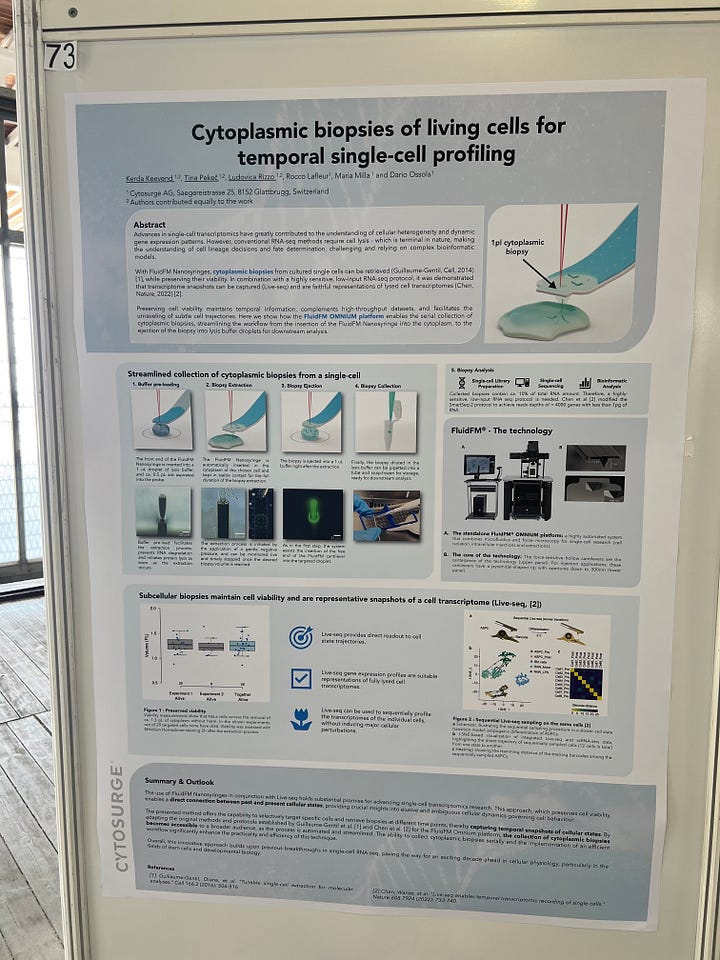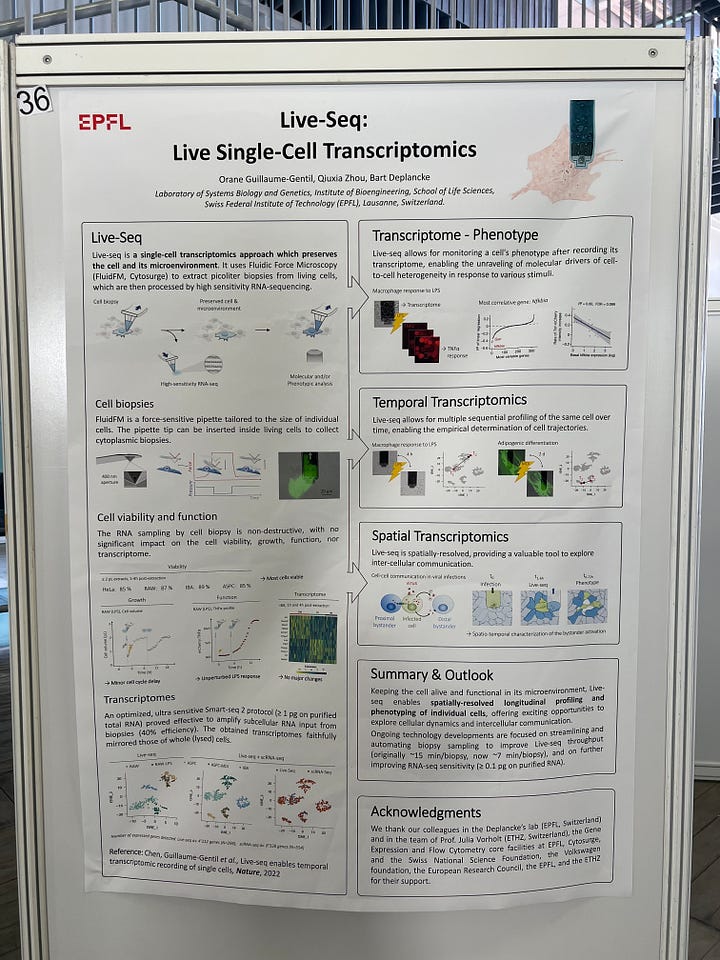From May 25th to 30th, I was in ☀️ Barcelona. Any reason is a good reason to visit this city. Having lived there for 10 years, I have many friends and colleagues to see👨🔬👩🔬. However, this blog isn’t about them. Instead, I’ll share the new insights I gained at the Innovations in Single Cell Omics (ISCO) meeting.
ISCO
🗓️ May 27–28, 2024
📍PRBB Auditorium; CRG – Centre for Genomic Regulation, Barcelona
What did I learn? 🤓
Cell Biopsies
The first time I heard about Cytosurge's technology was when I was a group leader at the GWCCG in Sydney. Back then, it was being used only for gene editing. So, when I saw it at ISCO, I didn't immediately recognize it.
Cytosurge's technology, called FluidFM, allows us to inject or extract fluids from single cells. This has various applications, including temporal single-cell transcriptomics. Essentially, we can biopsy a living individual cell’s cytoplasm, sequence its RNA, and then return to the individual cell for downstream experiments. The paper “Live-seq enables temporal transcriptomic recording of single cells" shows how we can incorporate FluidFM technology into single-cell projects (Fig. 1).


Here are some questions that I asked 👇🏻:
How much of the cytoplasm do we need to collect?
👉🏻 It depends on the cell type and size. In general, up to 4 picoliters of the cytoplasm.
What single-cell RNA method was used downstream to the biopsy?
👉🏻 The Smart-seq protocol.
Does this biopsy process stress the cells? Have you studied the differences between the transcriptomes of biopsied and non-biopsied cells?
👉🏻 We detected a small cell cycle delay, but the cells quickly recover their volume and continue progressing through their cycle after a cytoplasmic biopsy.
Can we biopsy the nucleus?
👉🏻 Yes, we can collect up to 0.6 picoliters.
Deep Cell
This company created the REM-I instrument. It's a "gentle" sorter that uses high-resolution, label-free imaging and AI (deep learning). It sorts cells into plate wells based on their shape, size, and structure. The resolution and data analysis are so advanced that we can explore another -ome: Morpholome.
Here are 3 questions I asked 👇🏻:



